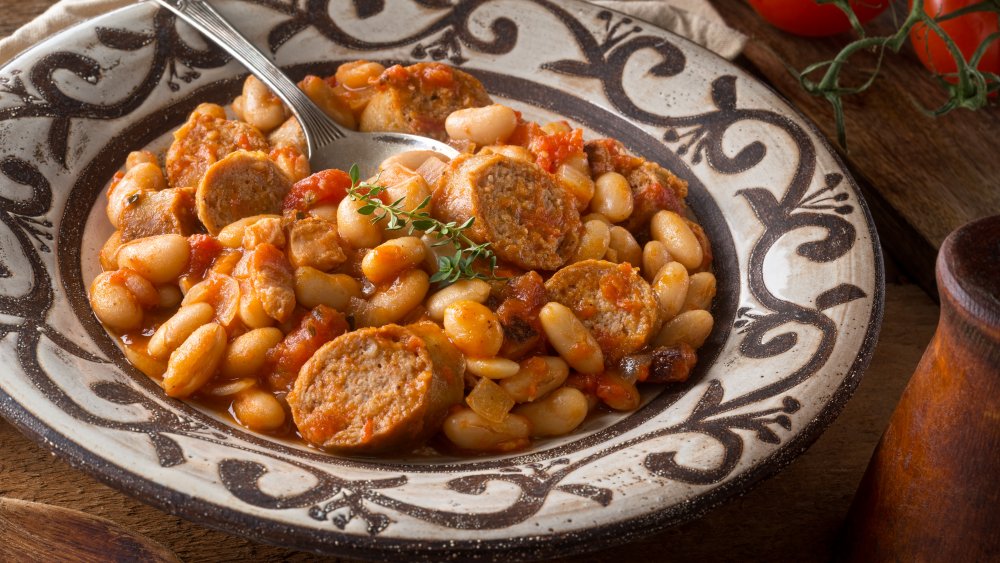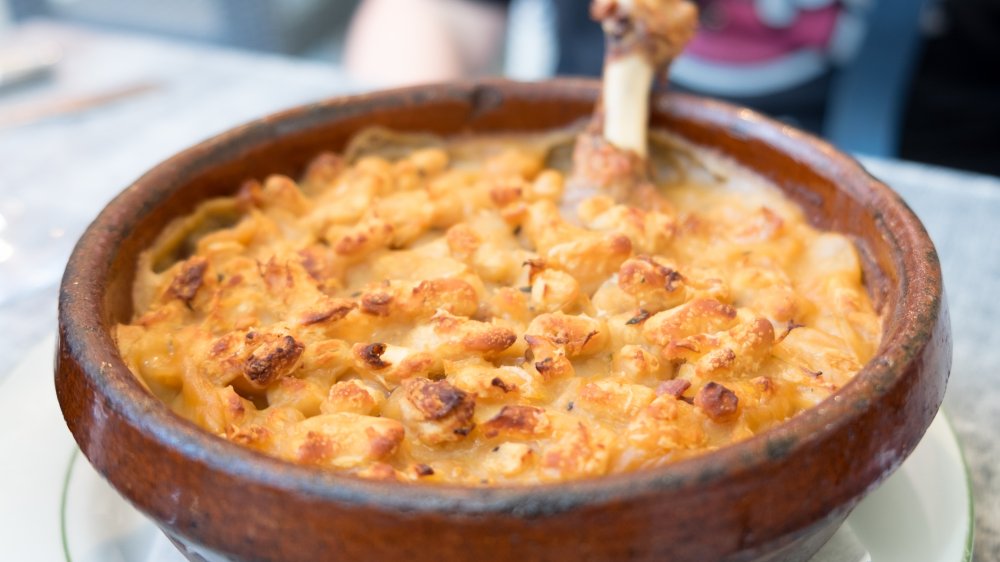What Is A Cassoulet And What Does It Taste Like?
When describing what a cassoulet is, Julia Child loquaciously noted, "Cassoulet, that best of bean feasts, is everyday fare for a peasant but ambrosia for a gastronome, though its ideal consumer is a 300-pound blocking back who has been splitting firewood nonstop for the last twelve hours on a subzero day in Manitoba" (via D'Artagnan). Child's colorful description isn't too far off the mark. While some define a cassoulet as a casserole, others more accurately describe it as a rich and substantial stew made with a base of simmered white beans, sausage, pork, and duck confit (via The Kitchn).
This is not a quick dish you throw together at a moment's notice. The French cannot be rushed and neither can a cassoulet. It takes a lot of love and time – up to four days, including prep time – to achieve the creamy texture and layers of flavor from the duck confit and sausage that are a signature of this dish, which hails from the province of Languedoc, a southwestern region in France. Per award-winning food writer Clifford A Wright, legend has it that cassoulet was born out of necessity as Edward, the "Black Prince" of Wales, attacked Castelnaudary in 1355, forcing its people to take what little food they had left to collectively make a stew. Its name is derived from the conical earthenware bowl used to cook it: the "cassole."
Pick your beans carefully
Regardless of how cassoulet came into existence, after tasting this provincial dish, you will be glad that it did. Today, cassoulets are serious stuff. There is even a society, La Grande Confrérie du Cassoulet de Castelnaudary, that was formed to preserve and defend the honor and reputation of the cassoulet. Per award-winning food writer Clifford A Wright, the best version of this rustic dish will "will be found in the kitchen of a farmer's wife." But if you have the time and the ambition you can make it yourself. There are just a couple of basic rules you should follow if you choose to accept this challenge.
Aside from carving out enough time to devote to creating your cassoulet, the first, and perhaps most important consideration to take into account is choosing the right beans because they will serve as the foundation of this dish. Tarbais beans are traditionally used in southern France. As you move northward, flageolet beans are more commonly used. However, freshly picked fava beans are generally considered ideal for making cassoulet in the spring. Secondly, if you want your cassoulet to be perfect, you must respect the legend and lore that states you must break the film that forms as the cassoulet cools 7 times before enjoying this protein feast.

